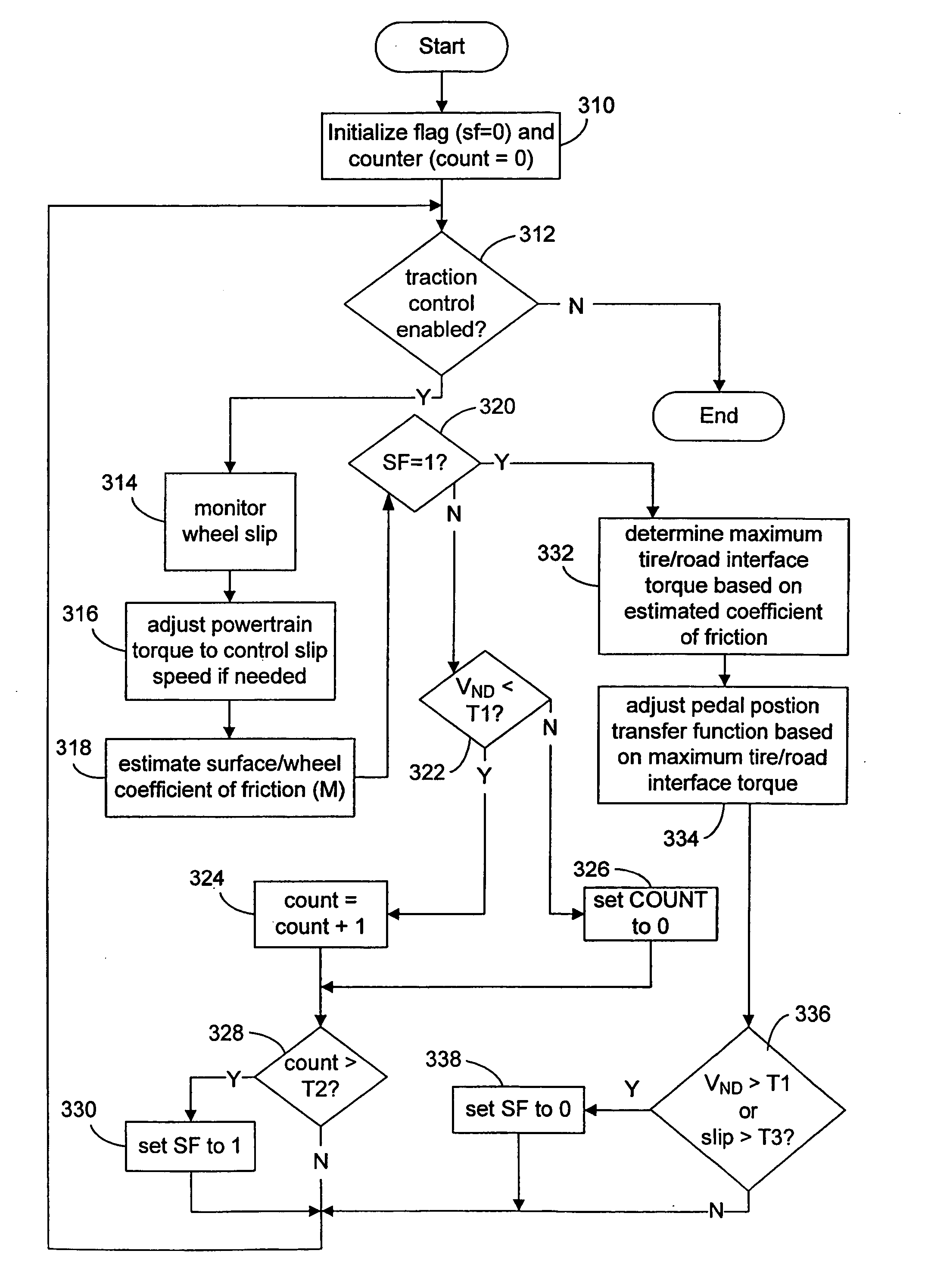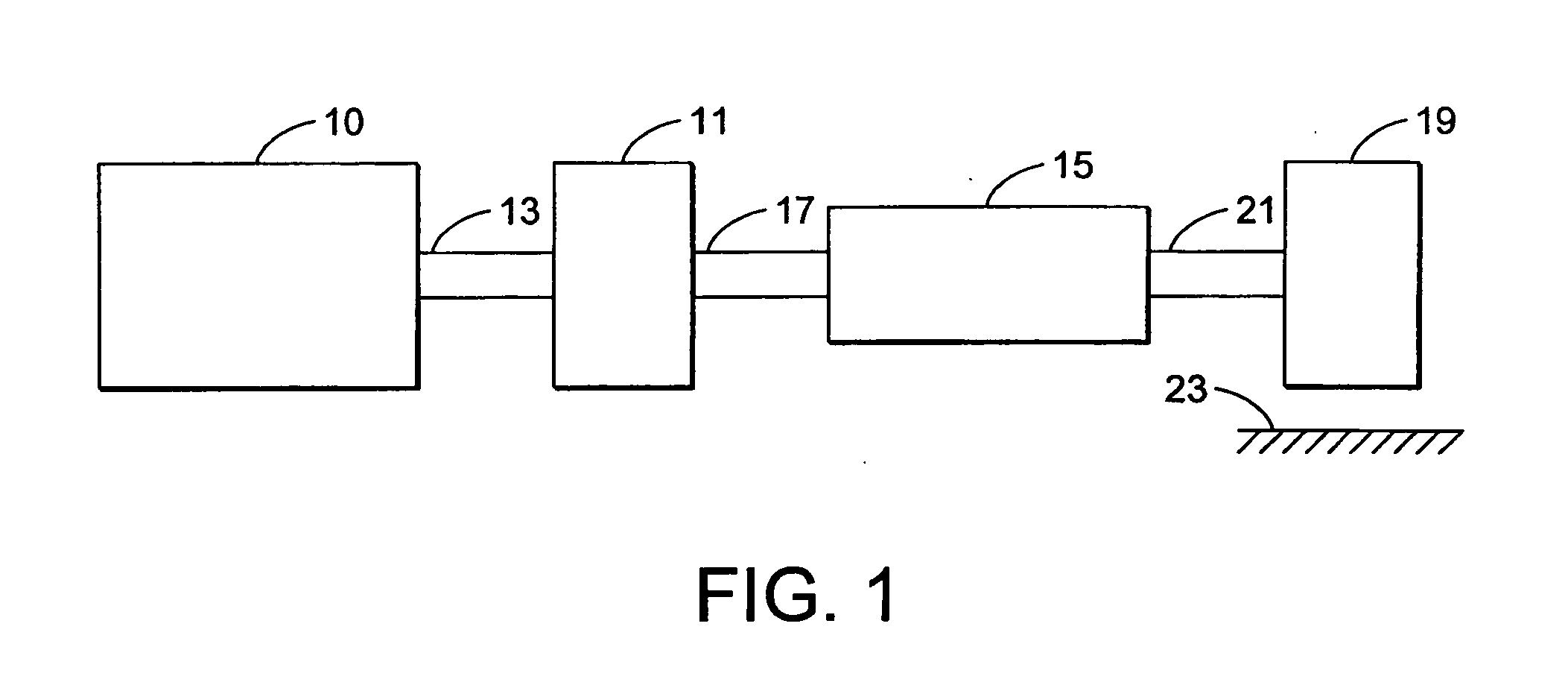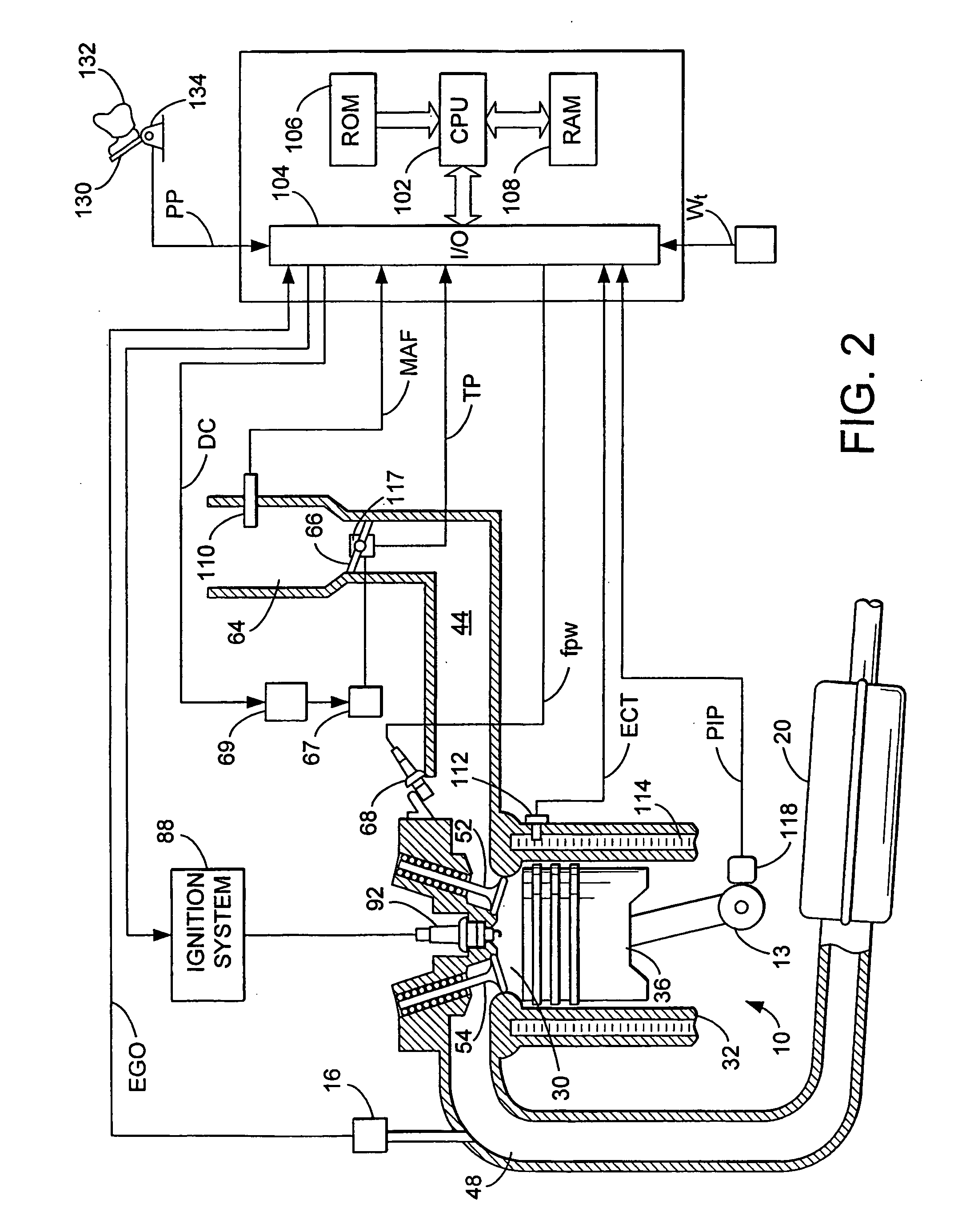Traction control system and method for a vehicle
- Summary
- Abstract
- Description
- Claims
- Application Information
AI Technical Summary
Benefits of technology
Problems solved by technology
Method used
Image
Examples
Embodiment Construction
[0016] Traction control systems may be used to adjust powertrain output to improve vehicle operation in situations that may result in reduced traction between a vehicle's wheel and the road. As noted above, a non-moving vehicle situation can be especially challenging where even limiting powertrain output and controlling wheel slip may not result in any significant movement of the vehicle. The following disclosure addresses such a situation, as well as others.
[0017] Referring to FIG. 1 an example powertrain of a vehicle is shown. Specifically, internal combustion engine 10, further described herein with particular reference to FIG. 2, is shown coupled to torque converter 11 via crankshaft 13. Torque converter 11 may also coupled to transmission 15 via transmission input shaft 17. Torque converter 11 may have a bypass clutch (described in FIGS. 20-23), which can be engaged, disengaged, or partially engaged. When the clutch is either disengaged or partially engaged, the torque convert...
PUM
 Login to View More
Login to View More Abstract
Description
Claims
Application Information
 Login to View More
Login to View More - R&D
- Intellectual Property
- Life Sciences
- Materials
- Tech Scout
- Unparalleled Data Quality
- Higher Quality Content
- 60% Fewer Hallucinations
Browse by: Latest US Patents, China's latest patents, Technical Efficacy Thesaurus, Application Domain, Technology Topic, Popular Technical Reports.
© 2025 PatSnap. All rights reserved.Legal|Privacy policy|Modern Slavery Act Transparency Statement|Sitemap|About US| Contact US: help@patsnap.com



